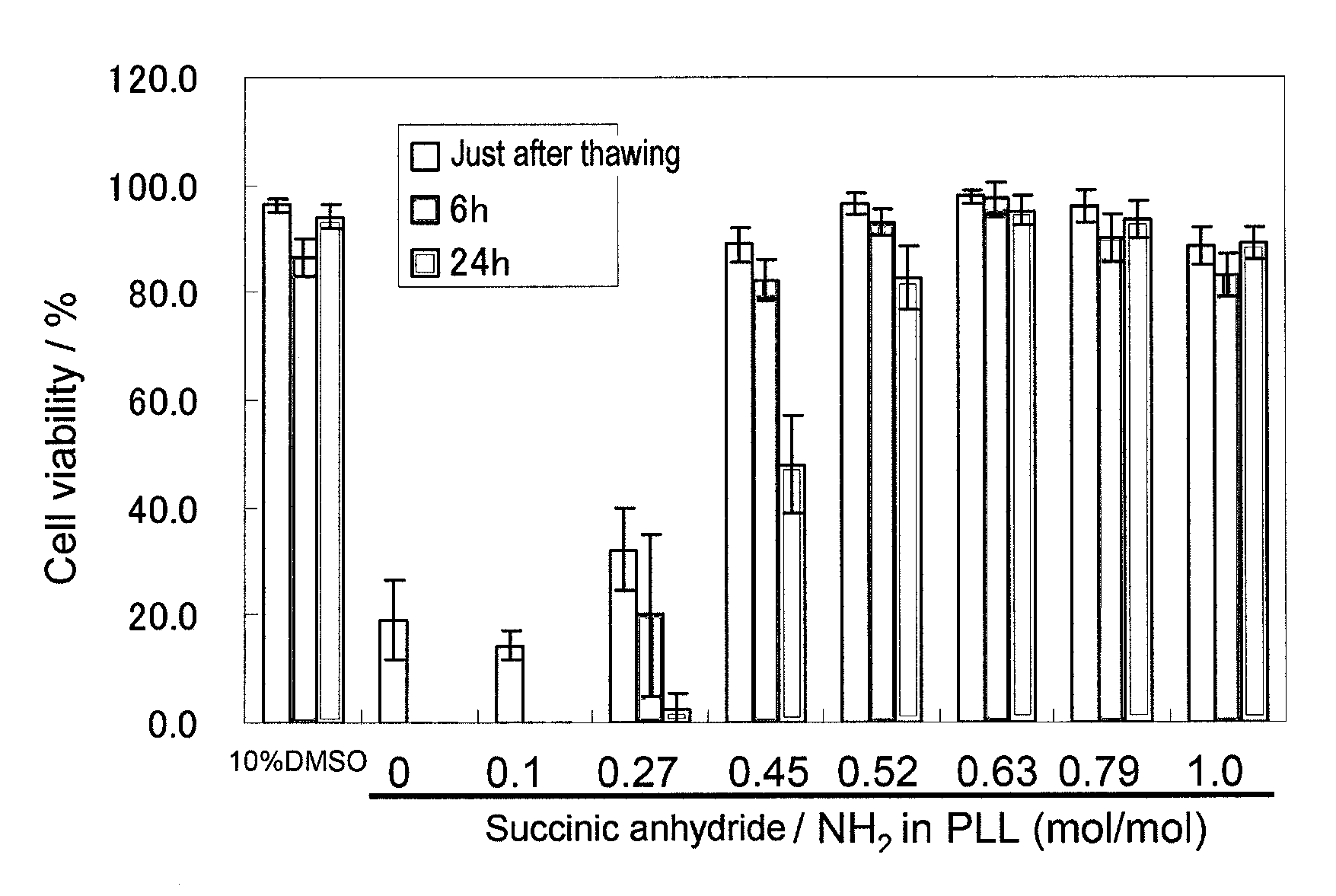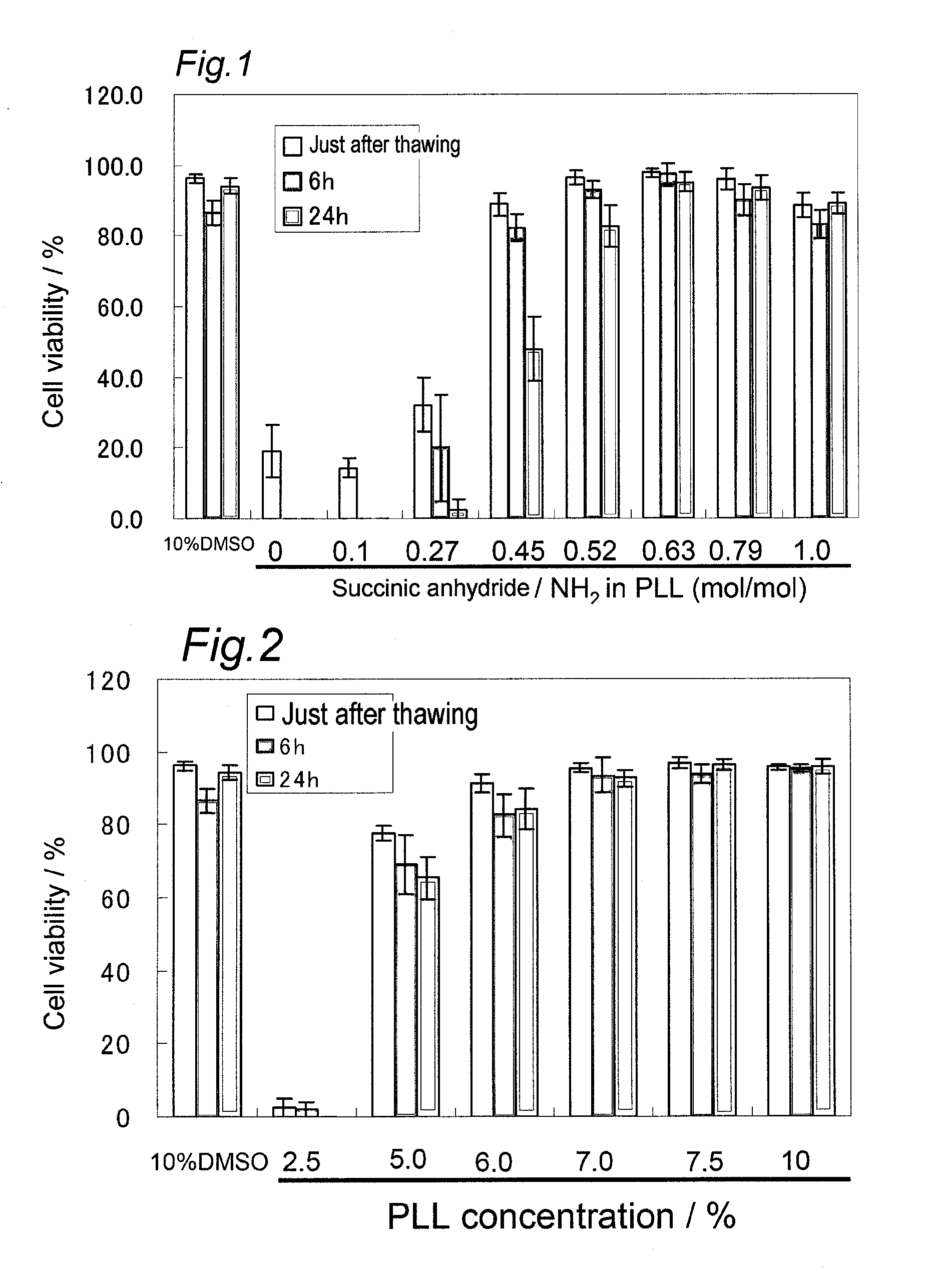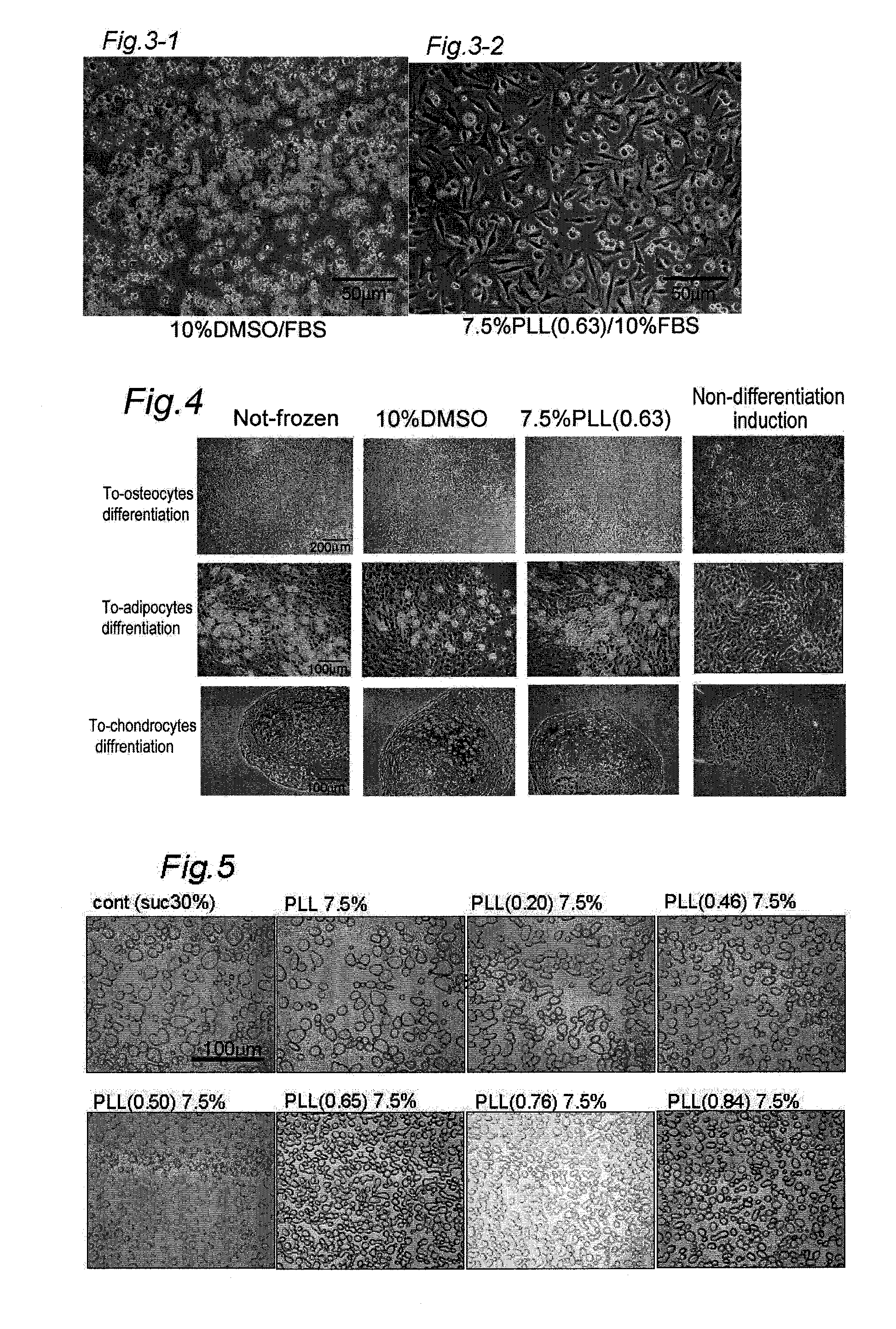Composition for cryopreservation of cells and tissues
a technology for cells and tissues, applied in the field of agents for cryopreservation of human and animal cells and tissues, can solve the problems of deterioration of cell starting performance, inability to meet certain kinds of cells, and high demand for new cryopreservation materials with low toxicity, so as to achieve the effect of curbing the deterioration of the starting performan
- Summary
- Abstract
- Description
- Claims
- Application Information
AI Technical Summary
Benefits of technology
Problems solved by technology
Method used
Image
Examples
example 1
Preparation of Cryopreservative Solution
[0042]A 25% aqueous solution of ε-poly-L-lysine (made by Chisso Corporation; Molecular weight: 4000) was used; and a 20% aqueous solution of polyarylamine (Nittobo, molecular weight 5000 [PAA-05L], 15000 [PAA-L], 60000 [PAA-H]) was used. Each of the solution is added with 0-100 mol % succinic anhydride (Wako Pure Chemical Industries) on basis of amino groups of the polyamine polymer to obtain poly-amines having blocked amino groups with different amino-groups-blockage rates. Each poly-amine solution was added to Dulbecco's Modified Eagle Medium (DMEM, Sigma Aldrich) by 0-10 w / w %. On this occasion, pH of the medium was adjusted to 7.0-8.0 with 1N hydrochloric acid or sodium hydroxide solution. Further, the osmotic pressures of the media were measured by a vapor pressure osmometer (Type 5520, Wescor) and adjusted with 10% sodium chloride aqueous solution.
example 2
Cryopreservation of Cultured Cells
[0043]In a cryovial (Simport Plastics), 1×106 cells of each of cell species of L929, MG63, Caco-2 (Japan Sumitomo Pharmaceuticals), Colon26, HT1080, B16F1 and KB cell (ATCC) are suspended in 1 mL of each cryopresevation liquid; and then were frozen in a −80° C. freezer. After one week, the cells were quickly thawed in a 37° C. water bath, washed in DMEM and subjected to cell mortality test with trypan blue dye. The thawed cells were then seeded in 6-well culture plates at 1×105 cells / well, and cell survival rate was evaluated with trypan blue dye after 6 and 24 hours of culturing. A commonly-used cryopreservative, which is 10% DMSO in fetal bovine serum (FBS), was used as a cryopresercation liquid of comparative example.
[0044]As shown in FIG. 1, when used as the cryopreservation liquid in cryopreserving L929 cells was each 7.5% solution of the poly-lysine (PLL) having been modified by adding 50% or more molar amount of succinic anhydride on basis of...
example 3
Toxicity Test
[0048]Toxicity test was performed on L929 cells. The cells having been suspended in a culture medium of DMEM with 10% fetal bovine serum are seeded in 96-well plates (1.0×103 cells / well) and cultured at 37° C. for 72 hours. Thereafter, each of ε-poly-L-lysine and the modified poly-lysines having been added with varying concentrations of succinic anhydride was added to the culture media to attain final concentrations of 0-10%. Then, after the culture for 48 hours, concentration values at 50% cell growth inhibition were measured as IC50 by MTT assay, relative to cell growth in the culture medium not added with the polymer. Table 2 shows the results; and a preservation liquid of comparative example is the DMSO solution (10% DMSO / fetal bovine serum). As seen from Table 2, IC50 values for the PLLs succinc anhydride 58%, 63% and 79% were 2-3 times of that for the DMSO solution; this indicates that the toxicity of the poly-lysine is ½-⅓ of that of the cryopreservation liquids ...
PUM
| Property | Measurement | Unit |
|---|---|---|
| mol % | aaaaa | aaaaa |
| mol % | aaaaa | aaaaa |
| temperatures | aaaaa | aaaaa |
Abstract
Description
Claims
Application Information
 Login to View More
Login to View More - R&D
- Intellectual Property
- Life Sciences
- Materials
- Tech Scout
- Unparalleled Data Quality
- Higher Quality Content
- 60% Fewer Hallucinations
Browse by: Latest US Patents, China's latest patents, Technical Efficacy Thesaurus, Application Domain, Technology Topic, Popular Technical Reports.
© 2025 PatSnap. All rights reserved.Legal|Privacy policy|Modern Slavery Act Transparency Statement|Sitemap|About US| Contact US: help@patsnap.com



